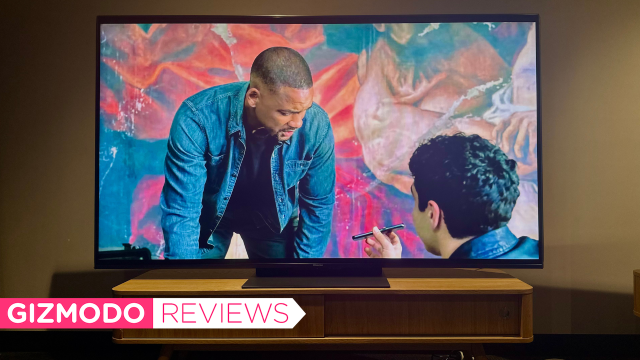A few weeks ago, I got to finally properly experience the flagship TV from Hisense, the UXAU the company reckons could be the OLED killer. While it might not kill OLED, it certainly delivers an interesting proposition to consider ULED (Ultra-LED) over OLED.
Hisense debuted the UXAU ULED TV in January at CES. I was lucky enough to be on the ground in Las Vegas to experience the screen in all its glory, but hadn’t exactly sat down to watch some properly, until now, sitting in meeting room converted to a loungeroom at the PR firm Hisense uses in Australia. I took some notes while demolishing way too much popcorn, so here are my thoughts on the TV that thoroughly impressed me.
The Hisense UXAU ULED TV
The UXAU comes in 75- and 85-inch options, with the first under $5,000 ($4,999) and the second a little pricier at $9,999. The 75-inch model has a centre stand (with dual positioning) while the 85-inch has feet (you know, because it’s bloody huge). The ULED X TV boasts Mini-LED X contrast, 4K resolution, and CineStage X 4.1.2 surround, which means the UXAU has multiple up- and out-firing speakers. The UXAU also boasts 2,500 nits of peak brightness – which is why the company is backing this tech over OLED.
But what is ULED, though?
Great question. Let’s recap.
The main difference between an OLED TV and an ULED TV is the OLED’s ability to turn pixels on or off individually instead of using a backlight as found in ULED TVs. OLED won’t bleed, whereas the issue previously with ULED has been that a bit of blacklight bleeding occurs. Hisense has now had 10 years to fix that, and it reckons the UXAU is proof of that.
While OLEDs have a contrast advantage, ULEDs, particularly the latest generation with Quantum Dot technology, have a huge advantage in brightness. If you ask Hisense, the company will tell you the brightest OLED is only half as bright as most Quantum Dot-enabled ULED TVs. The company will also tell you it makes ULED the perfect option for sunny Australian loungerooms.
So how does that look?
Really good, actually.
The first thing I noticed was just how bright the screen was. I’ve said it before, with other reviews, (specifically the Sony TV) that TVs are sort of more dull when they focus so much on perfecting colour. But, the Hisense UXAU was bright enough and it rendered colour gorgeously, without requiring you to sit in perfect darkness to see.
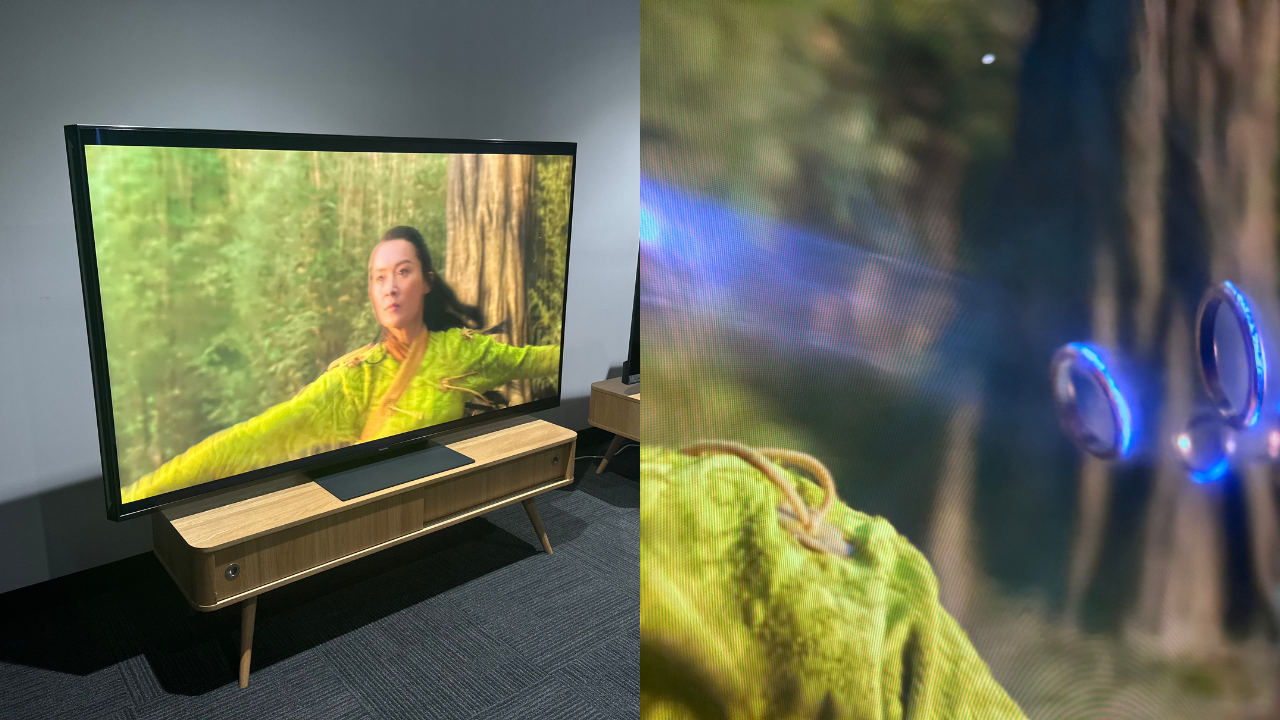
Photos will never do this type of scene justice, but you can surely tell just how 3D the rings look in this shot. Of course, this is SFX in action, but Hisense made the decision to become IMAX Enhanced certified, which means movies like Shang Chi and the Legend of the Ten Rings are delivered in a way that “offers the most immersive viewing experience outside of a theatre by bringing together best-in-class certified devices, remastered content, and elevated streaming”. In non-marketing fluff, you’ll get a movie experience on the Hisense UXAU TV that rivals that of a cinema.
Older movies were also treated with respect by the Hisense UXAU – the company hasn’t opted for an overcorrection (read: AI smoothing) of the movie, and instead delivers the likes of The Truman Show with its 90s vibe, just on a 2023 TV.
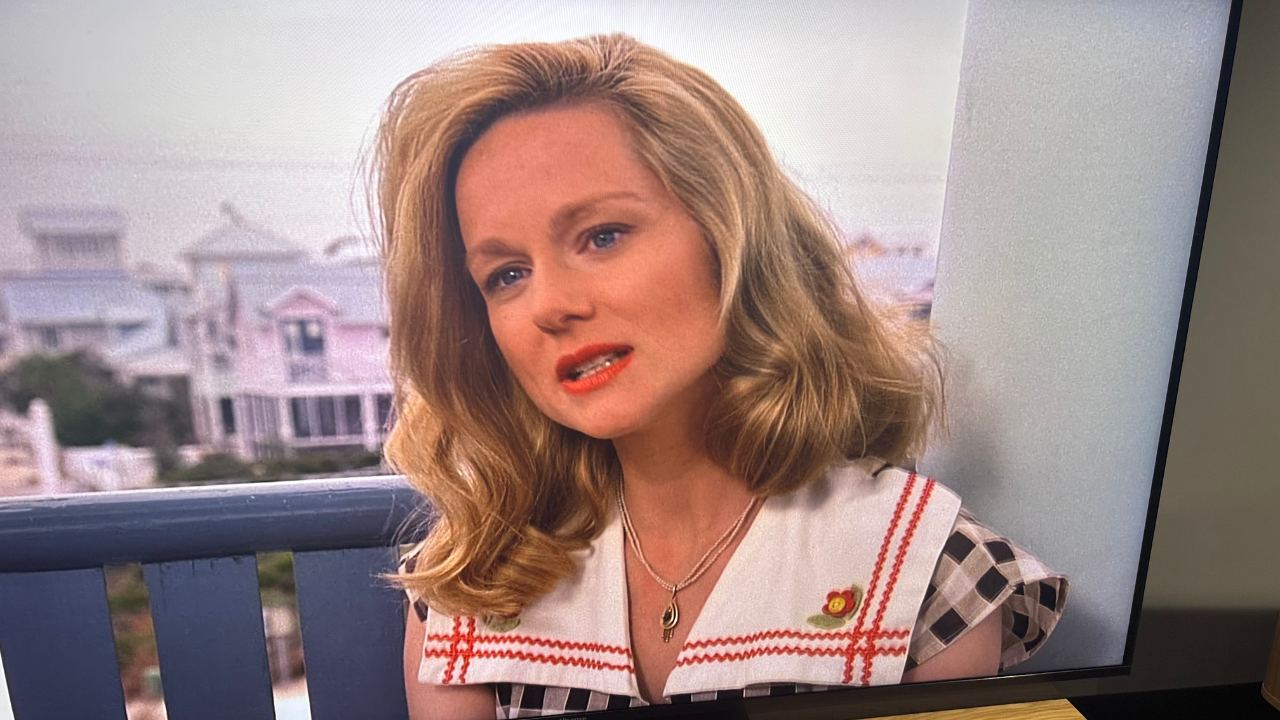
If we turn to the hero pic of this article, I have to say I was thoroughly impressed with how the bullets from a sniper are celebrated on this TV. Watching Wilderness on Prime Video (a wild TV show, btw), I was glad I switched on something that had a less bright colour palette. Jenna Coleman looked a bit too washed out, but a simple flicking through the TV modes fixed that right up and you can drill in further to fiddle around with the brightness/contrast if you like, but be warned that too many options aren’t always a good thing.
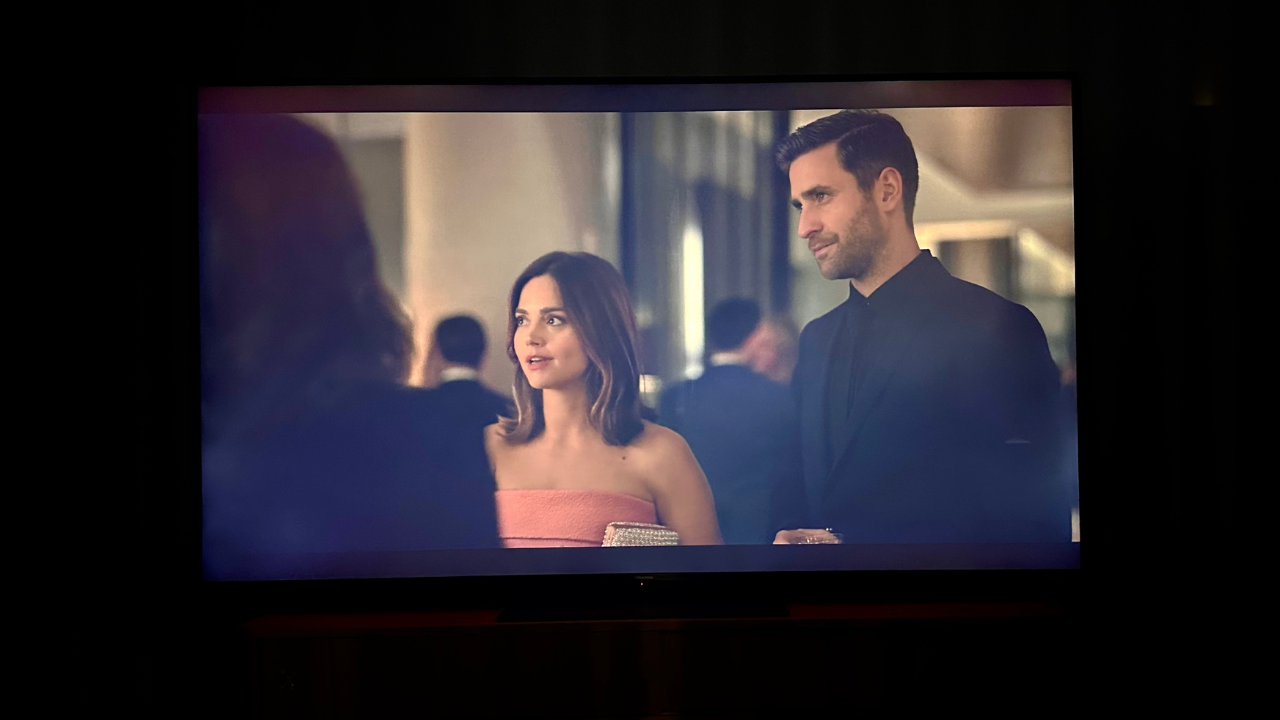
The room I was in had long wall-to-wall windows that took up nearly half of the wall. These were covered with curtains, which meant when the lights were off, it was like watching TV in pitch black, save for the light coming from the rest of the office space outside. In this space, the TV was bright, but not too bright, and the colour on every picture was without glare. It was best to watch a show like Wilderness without the lights on – you miss the differentiation between the number of blacks on the screen if you soak the room in light.
It took a minute to get sport sorted with all those options, but we got there, and while the grass might seem a little too green, most of that is Foxtel’s fault. It was also this brighter setting that the ball movement tended to favour.
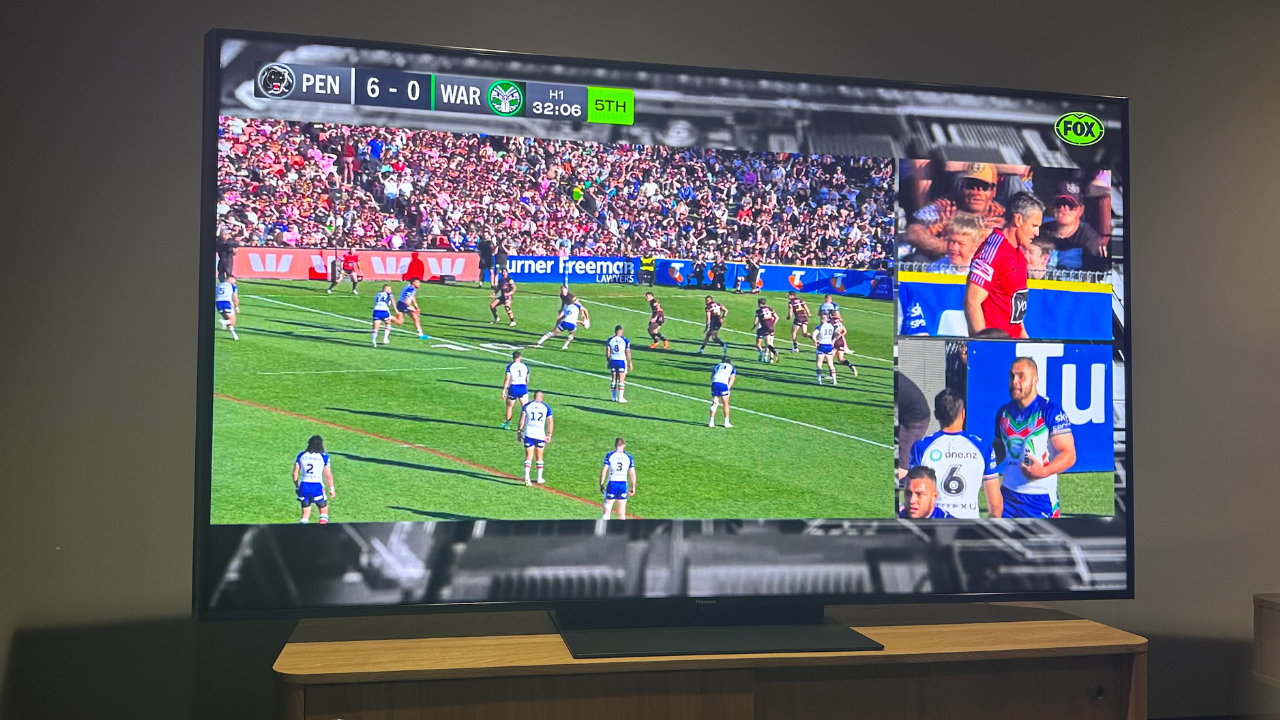
With the curtains drawn a little, you can still some glare on the UXAU TV, even Hisense isn’t immune to Aussie sun.

The photo above was taken while watching an animation – while not something I’d usually watch, I wanted to test how the Hisense UXAU TV handled animation, in particular, one where the characters are literally non-solid. While the photo below looks a little washed on, in real life, this was not the case. The colours in every scene were bright, bold, and didn’t bleed into one another like they tend to on other TVs.

My overall take of the Hisense UXAU TV is that colours are true to life, blacks are black, whites are bright, and colours are bold, resulting in a gorgeous picture across all genres, even when the subject matter is stretched far bigger than it appears in real life.

On the home screen, the apps were clear and it was only really let down by what seemed to be older promo pics for TV shows. Hisense has opted for its own TV OS, which I don’t feel is necessary, but it’s inoffensive, works well, and to be honest, anyone shaking up the Google monopoly is a welcome change.
How does it sound?
The first thing I noticed about the Hisense UXAU TV was the brightness; the second was that there was no soundbar attached. And, although I was in a quiet room, the sound was more than sufficient. Which was probably a good thing, as usually when I review a TV, the soundbar is attached and it’s only when you switch it off that you notice how bad the sound was. I had no comparison here.
That said, while the Hisense UXAU TV delivered sound up and around, not making me feel I was missing any of the soundscape from Shang Chi and the Legend of the Ten Rings, if you’re going to be spending $4,999+ on a TV, you should probably invest in a sound system, too.
Elsewhere, there are ports aplenty, I touched on the OS, and the fact the larger of the two TVs needs a stand. But that’s really about it – it’s a TV that does all the TV things you’d expect.
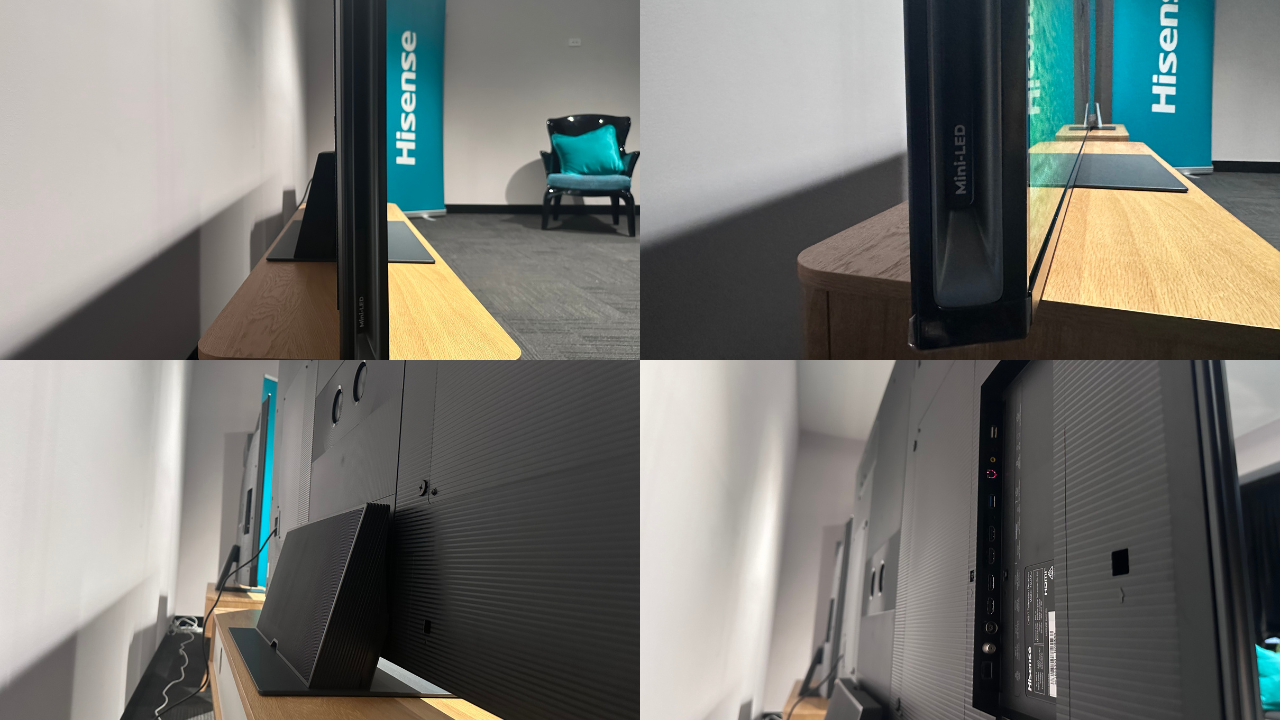
Final thoughts on the Hisense UXAU TV
Hisense has always been known in the Australian market for its position on the quality-to-affordability matrix. While the UXAU TV continues this trend for Hisense, it slips out of reach for a lot of consumers, being priced at $5,000 and $10,000 respectively. It’s a really solid contender for those considering options in this price bracket, and I don’t have a single thing bad to say about the ULED X. Hisense is just no longer a brand you should like of as ‘budget-friendly’. Is the space too crowded with Samsung and LG (some would argue Sony)? Perhaps, but Hisense is still giving it a red hot crack and the UXAU TV is proof of that.
